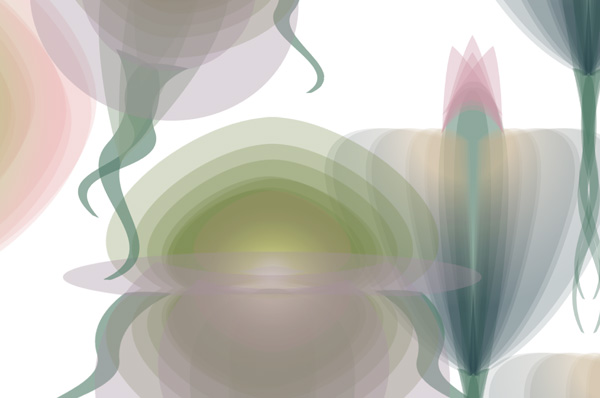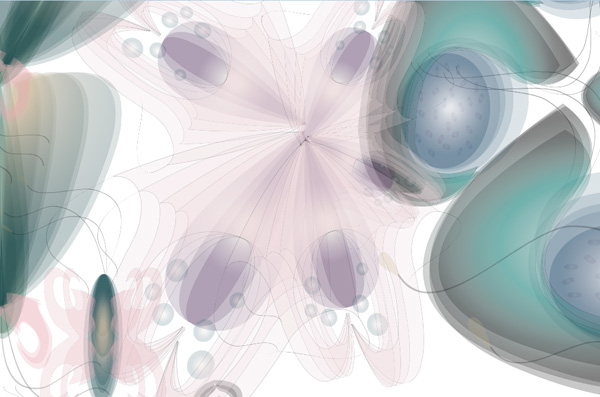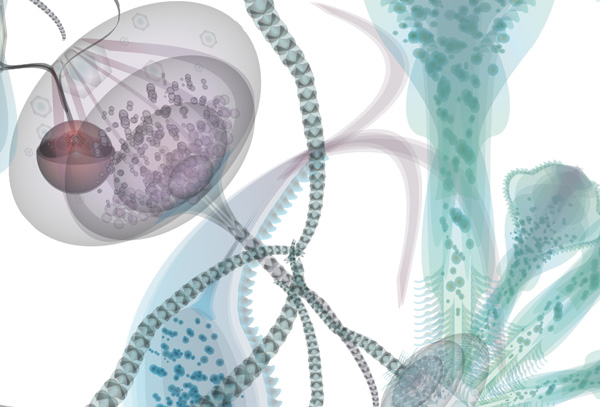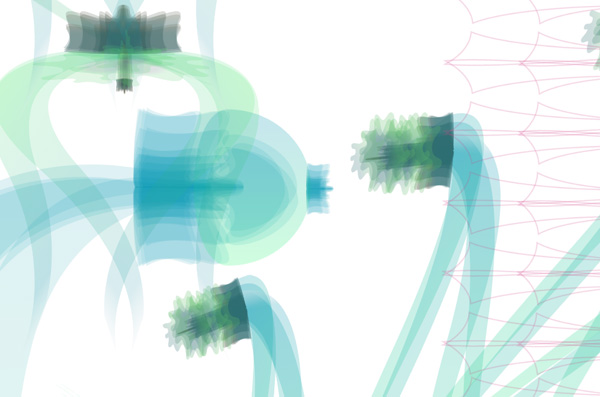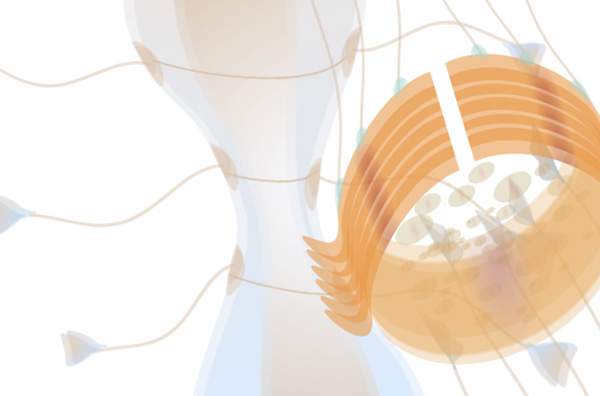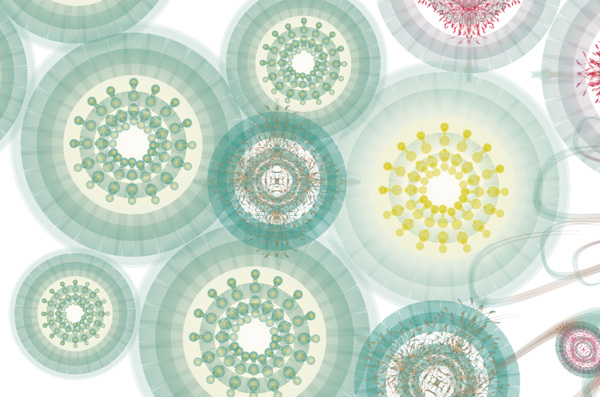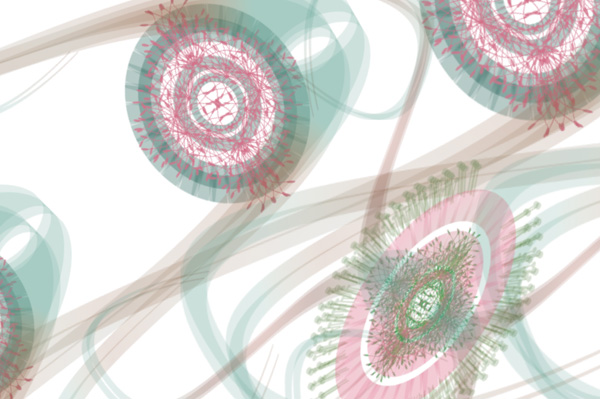GCD
Graphic Cellular Domestication is a system of graphic cells that adapt and evolve throughout their creation-process. The only thing that is fixed are the starting rules I used to create compositions. For example, a "dominant"-rule demands more elements on the page, but how and where (and what the result will look like in the end) is never known at the start. This is where the "domestication" comes into play. At some point, results might not always evolve towards "nice" or "beautiful" and then it's time for me to bend the rules. You can compare me to a chemist that adapts particular constituents of its product to see if this will yield better results.
In a way, GCD is my private design-game where I have awarded myself some extra lives and wildcards. An extra life serves to adjust the rules and a wildcard (or “virus”) serves to change the outcome when I’m not pleased. This way of working is interesting because I consciously “play” with coincidence, without losing total control.
Graphic Cellular Domestication is about the designing of shapes and forms (graphic cells), through a design-system (cell-crossing / rules), to obtain new elements (graphic cells), which on their turn will form a drawing (tissue).
Here are some examples of tissues at later stages in their life:
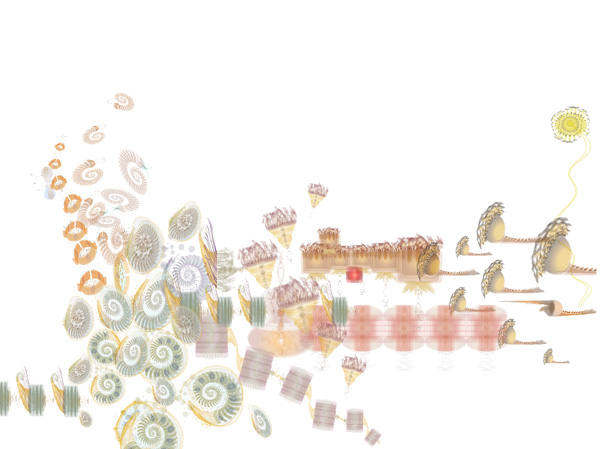
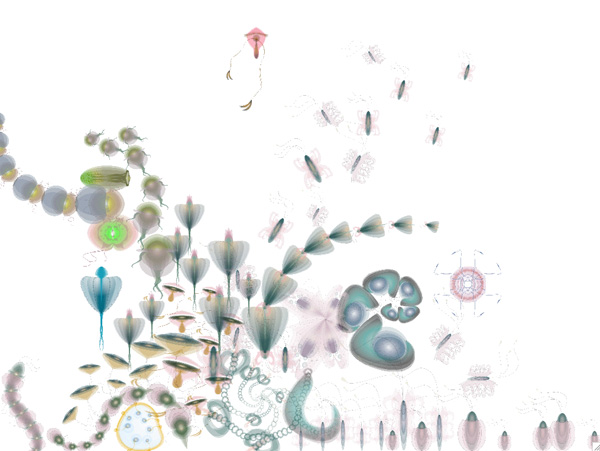
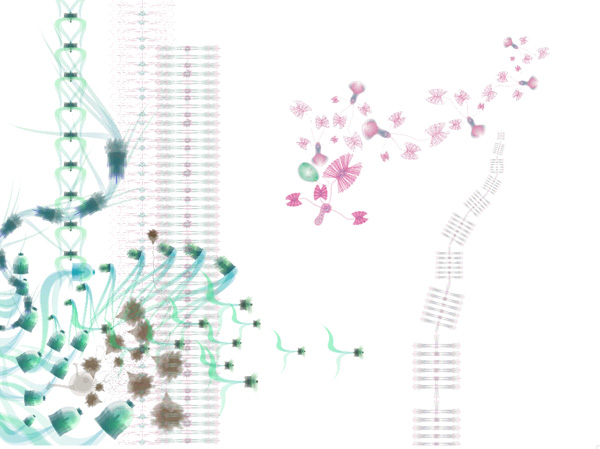
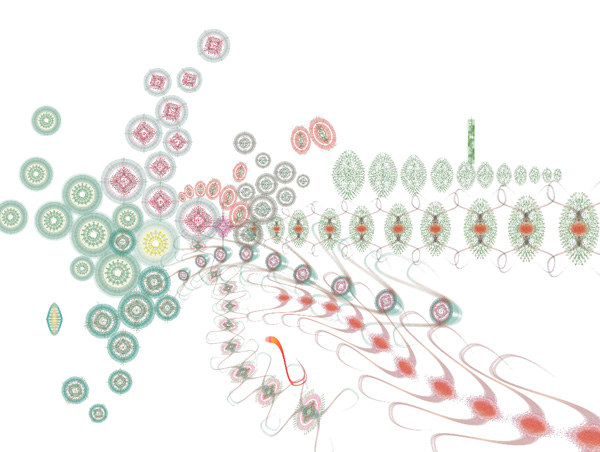
Cell-crossing rules
All of these tissues evolved from basic graphical elements that have cell-crossing rules attached to them. A typical rule can be as follows:
Each layer has an amount of shapes. The layer with the highest amount wins and that shape is going to be used in the organism that will rise out of the crossing. When the amount is the same, a fusion of the two forms is made.
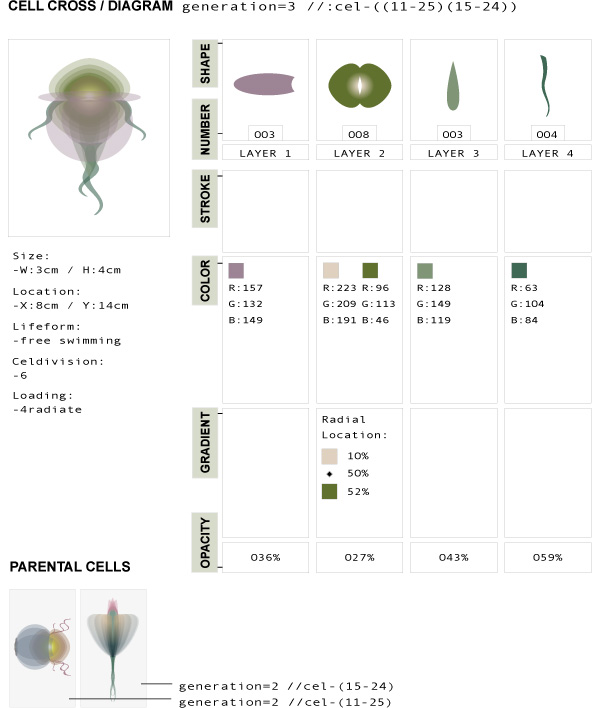
In detail
Since each of the tissues is made up of hundreds of individual cells, the level of detail is very high. Observe some of the compositions in close-up:
